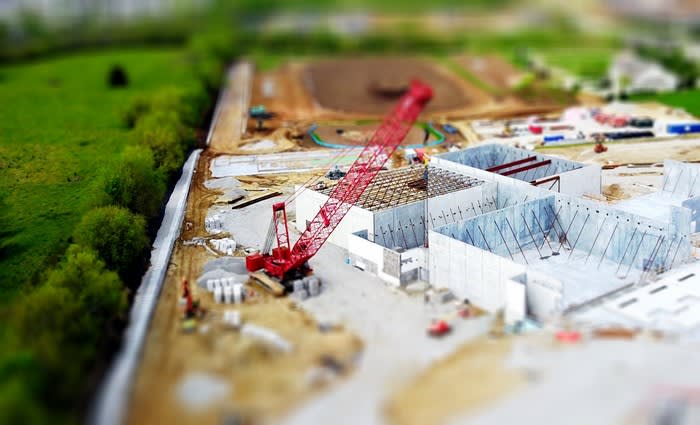Record annual infrastructure building: Ryan Felsman
EXPERT OBSERVER
Engineering construction work done rose by 2.2 per cent in the June quarter, down by 5.2 per cent from a year ago. A month ago, it was estimated that engineering construction was up by 0.4 per cent in the quarter, but down 7.2 per cent over the year.
Infrastructure boom: Engineering work done for the public sector rose by 2.7 per cent in the June quarter. Over the year to June, a record $37.4 billion of work was done for the public sector.
Work yet to be done: Excluding resources, engineering work yet to be done stands at $43.1 billion, below record highs. But outstanding road and railway work were both just below record highs. And electricity generation, transmission and distribution work was at five-year highs. The data on engineering construction work is important for builders, building material companies, professional services, developers, government businesses and other dependent sectors and industries.
What does it all mean?
The infrastructure boom continues on Australia’s eastern seaboard. Strong population growth and government spending are supporting a gargantuan pipeline of building activity in Victoria, New South Wales and Queensland.
In fact, construction work done in Victoria is at record highs, the highest in New South Wales in five years and at the strongest level since December 2015 in Queensland. While activity is largely concentrated on public transportrelated rail, road and airport projects, work done on much-needed electricity generation, transmission and distribution infrastructure is at five-year highs.
And it appears that the surge in construction activity and public transport-related infrastructure spending are generating price pressures. Over the year to June, construction costs were up 3.3 per cent - just below nine-year highs. And engineering costs rose by 4.2 per cent - a seven-year high.
Quantity surveyor WT Partnership’s recently released Australian Construction Market Conditions report says that infrastructure tender price growth will increase by up to seven per cent next year. Big-ticket projects, such as Badgerys Creek Airport in Western Sydney and the Melbourne Metro Rail Tunnel, will boost demand for building materials, plant, equipment and scarce labour – especially engineers, project managers and construction trades.
Wage pressures are building in the construction sector.
In fact, skilled vacancies for construction managers are around the highest level in seven years.
What do the figures show?
Engineering construction work done rose by 2.2 per cent in real (inflation-adjusted) terms in the June quarter – the fifth gain in six quarters. But work done is down 5.2 per cent on a year ago. Previously, engineering work was reported as rising by 0.4 per cent in the June quarter to be down 7.2 per cent over the year.
Value of work completed for the public sector rose by 2.7 per cent in the quarter while private sector activity rose by 1.8 per cent.
Over the year to June a record $37.4 billion of infrastructure work was completed (engineering work for the public sector.)
Construction work rose in four of the states and territories in the June quarter: NSW (up 3.3 per cent); Victoria (down 4.7 per cent); Queensland (up 3.4 per cent); South Australia (up 9.6 per cent); Western Australia (up 2.7 per cent); Tasmania (down 1.0 per cent); Northern Territory (down 16.2 per cent); ACT (down 16.5 per cent).
Work yet to be done: There was $64.4 billion of engineering work yet to be done as at June 2018, up from $59.8 billion in the previous quarter. Excluding the resource sector (coal, oil, pipelines etc.) work to be done stands at $43.1 billion, below the record high of $45.3 billion in March 2012.
As at June 2018, $18.3 billion of work was to be completed on roads and highways and $11.7 billion on railways. And work to be completed on electricity generation, transmission and distribution was the highest in five years at $6.8 billion.
In original terms, engineering work commenced in the June quarter was $29.0 billion, down by 2.0 per cent in the quarter. Almost $90.1 billion of engineering work was started in the past year. What is the importance of the economic data?
The Bureau of Statistics releases quarterly estimates of Engineering construction activity. The estimates include value of engineering construction work done, commenced and yet to be done, classified by state or territory, commodity (roads, bridges, pipelines etc.), sector (public/private) undertaking the work, and sector for whom the work is being done. The data is a comprehensive assessment of the infrastructure pipeline. What are the implications for interest rates and investors?
According to surveyor Rider, Levett and Bucknall, a record 735 cranes were hoisted above our major cities in the September quarter, reflecting the continuing strength of the construction sector within the Australian economy. Around 321 cranes are located in Sydney, followed by 192 in Melbourne and 112 in South-East Queensland.
Construction companies such as Lend Lease, Thiess, Brookfield Multiplex, BGC and Leighton have cranes and advertising scattered all over our major cities. They have plenty of work and are hoovering up highly skilled engineers, project managers and construction workers.
Demand for labour and materials in infrastructure and construction-related sectors will increase over the coming year, pressuring contractors and sub-contractors.
According to WT Partnership, tender prices will grow by 3- 7 per cent in New South Wales, Victoria, South-East Queensland, Tasmania, South Australia and the ACT in 2018-2019.
Major projects under construction include the Sydney and Melbourne Metros. And projects that will enter the pipeline include the East Coast Inland rail line, Melbourne Airport rail, Brisbane Cross River Rail and Badgerys Creek rail.
CommSec expects official interest rates to remain stable until late 2019.
Ryan Felsman is a Senior Economist for CommSec




